Brand storytelling can make or break the future of your business.
Why?
Because every day the internet becomes more crowded.
Hundreds of brands join the marketplace and push their prices lower.
The result?
You end up running a perpetual race to the bottom.
But you don’t have to join that race.
Instead, you can stand out and build a brand that people love to interact with and buy from. One that they tell their friends and family and coworkers about.
How?
By using brand storytelling to create a real competitive advantage.
In this article, we are going to show you what brand storytelling is, why it is crucial and the four steps you need to take today.

Manage all your social media accounts in one place.
Craft, schedule, & auto-post content to all your social channels, then track analytics and manage interactions from a single, easy-to-use dashboard.
What Is Brand Storytelling (And Why Is It Important)?
Brand storytelling is the process of creating a compelling narrative around your brand that connects with your target audience.
It is framing your brand in a way that aligns with:
- Your purpose
- Your customer’s worldview
To create an emotional connection at every point of contact.
You achieve this by cultivating a specific look, feel and even sound for your brand. One that makes your target customer stop and say, “Hey, this brand says something about who I am.”
For example:
Grey Poupon mustard spent the early 1990s running campaigns that told the story of a luxury brand:
These campaigns resulted in a 100 percent increase in sales in specific locations. And, the story was adopted and promoted by other subcultures.
Research from Vox shows that the brand has been featured in at least one hip-hop song every year since the campaigns started. Why?
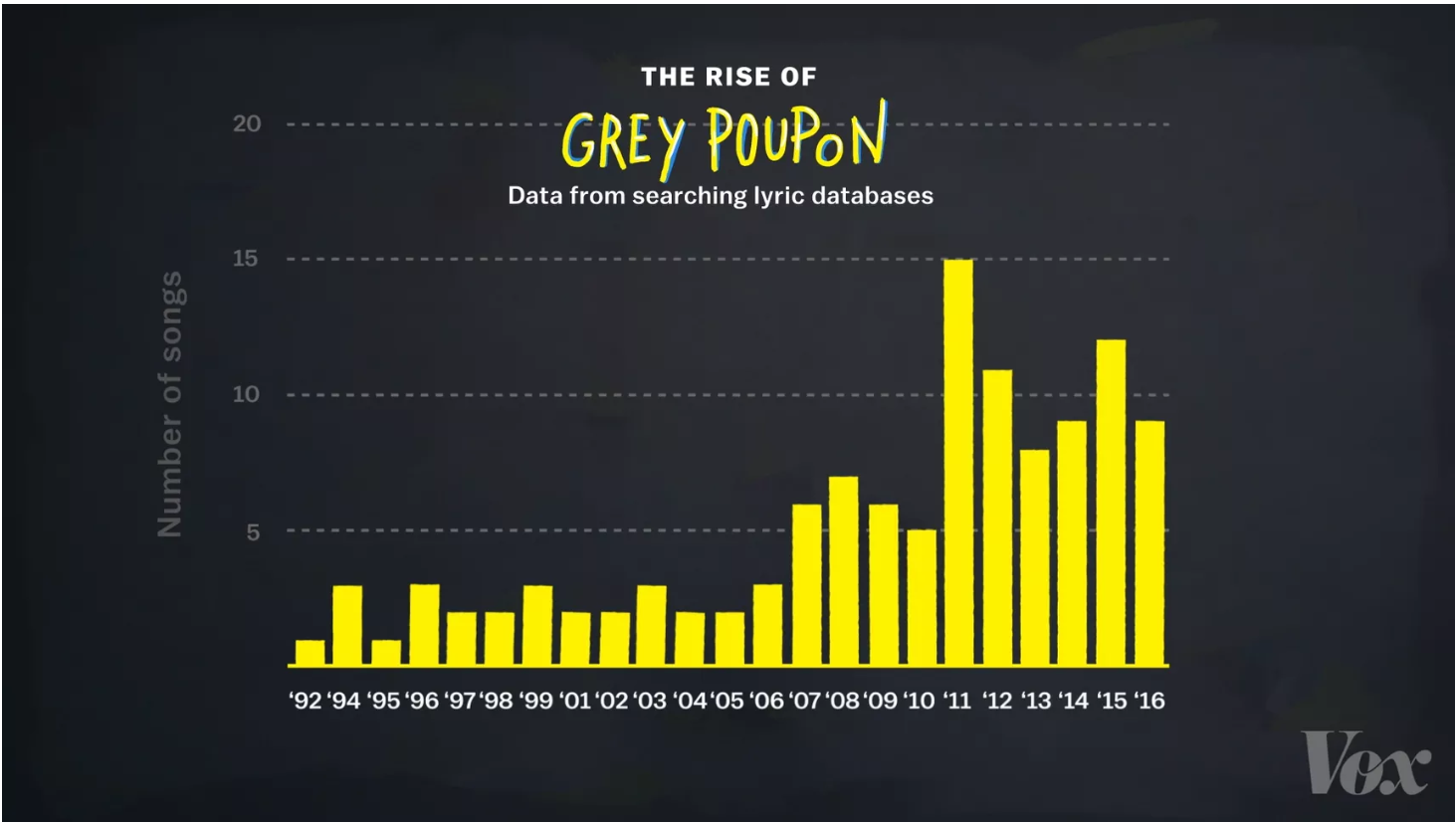
Because of its luxury connotations. Not bad for a jar of Dijon mustard!
You may be thinking that is great for them, but brand storytelling is a tactic your marketing team can do without. But, research strongly suggests otherwise.
Surveys in the UK show customers are actively seeking brand stories:
- 79% of adults want brands to tell better stories.
- 55% of them say it would convince them to buy the product.
Studies from the Harvard Business Review also showed similar results; many customers feel an emotional connection is more important than customer satisfaction.
By telling a brand story that resonates with your target audience, you put your brand in a position to:
- Attract more customers
- Increase sales
And even become a part of the cultural zeitgeist.
Let’s take a closer look at the power of brand storytelling.
Brand Storytelling In Action: What It Is Like To Run On Clouds
On Running is a Swiss company striving to reinvent the conventional running show.
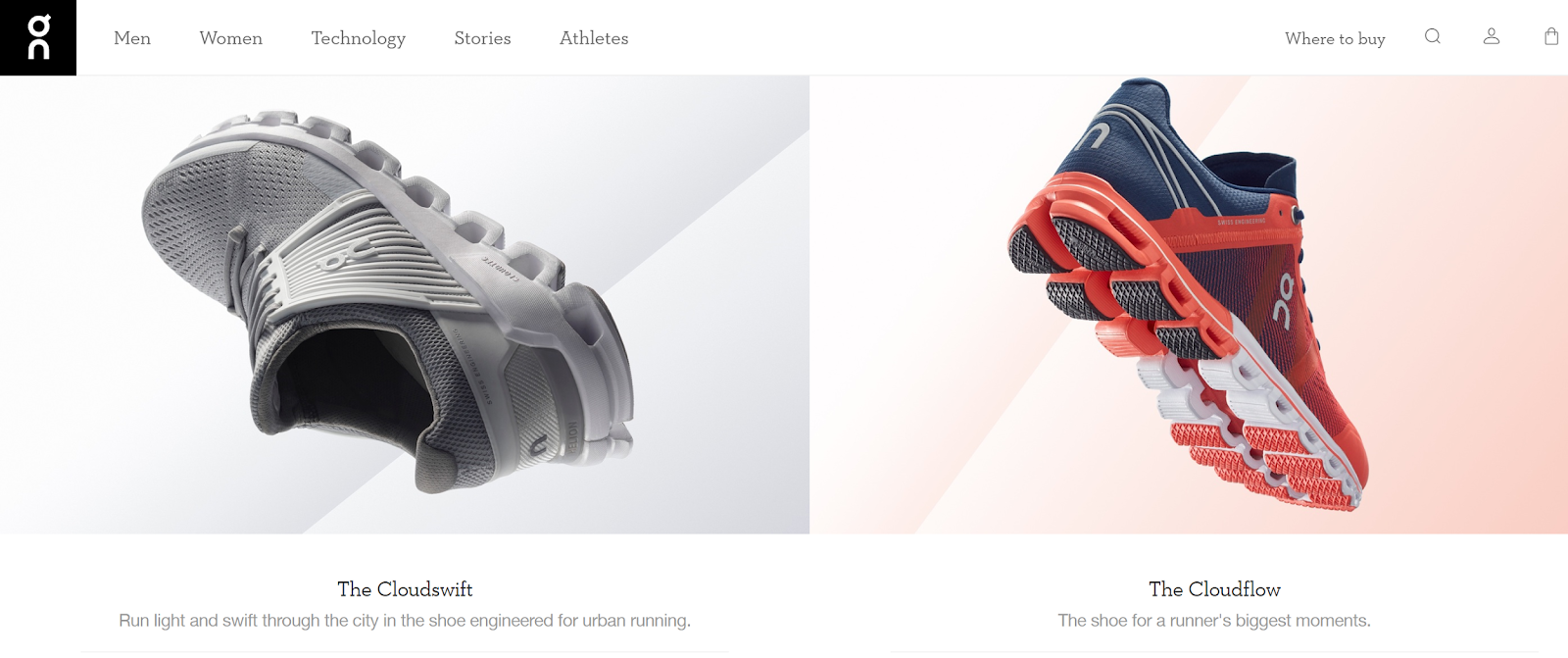
Their target audience consists of people who want to:
- Run differently
- Run smarter
- Use science to gain a competitive edge
They have found a way to tell this story through their brand’s tagline, “Running on Clouds”.
Every touchpoint their customers interact with tells a story of:
- Engineering
- Accuracy
- High-level performance
- Good aesthetics
- Comfort
- Speed
You can see it in everything from their product names through to their Instagram posts.
For example, each of their shoes has a name that begins with the word “Cloud”:
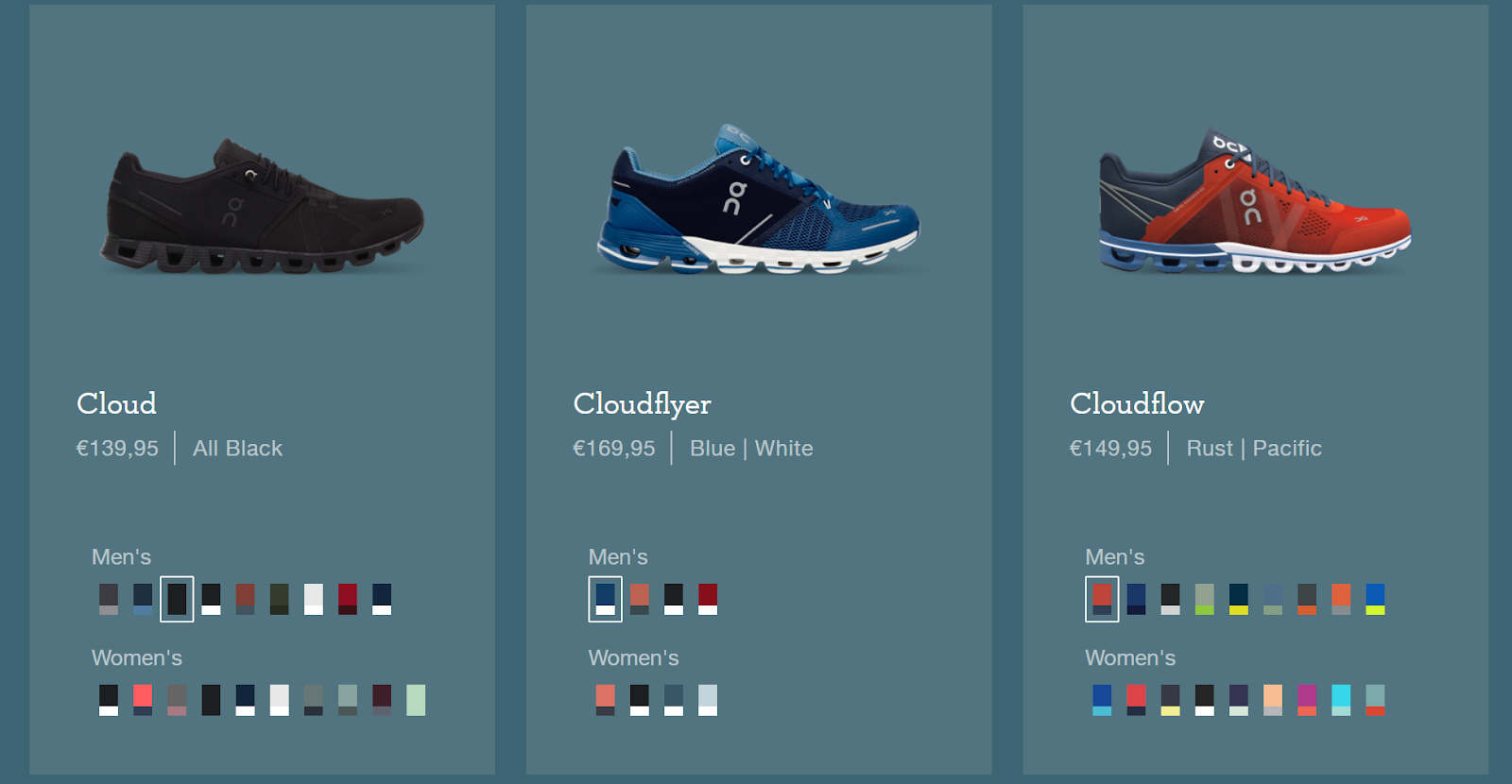
These shoes are also displayed uniquely in stores.
They use the bottom of the shelf to create a pleasing aesthetic that not only stands out but reflects the shape of a cloud:
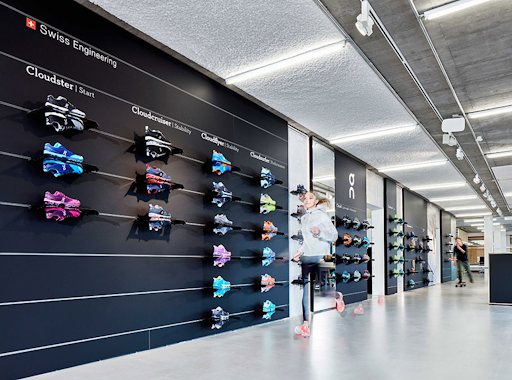
On Instagram, each of their posts focuses on one aspect of their brand storytelling.
This visual representation of their brand story means people who view their feed can interact with it before they even click on a post:

They also create video marketing content that shows their Swiss roots, as well as going deeper on different aspects of their story to create a stronger emotional response:
No matter where a potential customer first interacts with the On Running brand, they get an immediate sense of who this brand is for.
And, if you take a couple of minutes to read their customer reviews, you can see this strategy is extremely effective:
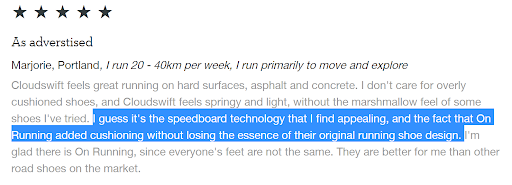
Now you have seen brand storytelling in action, let’s look at how you can start to tell your own compelling brand story.
How To Tell A Powerful Brand Story In 4 Steps
There are four elements of a powerful brand story:
- Your why
- Your Hero
- Your words
- Your audience
You will need to be able to understand and communicate each of these to resonate with your target customer.
Step #1: Find Your Why
Your brand story starts with your why.
You can find this by answering questions like:
- When you started, what was the change you wanted to see?
- What does your ideal world look like, and where do you fit in?
- What is the bigger picture, and what are you pursuing?
Questions like these will help to uncover your brand’s core values and what the message behind the story is.
For example:
Example #1 – Patagonia: Saving The Planet, One Product At A Time
Patagonia is an outdoor clothing brand on an environmental quest.
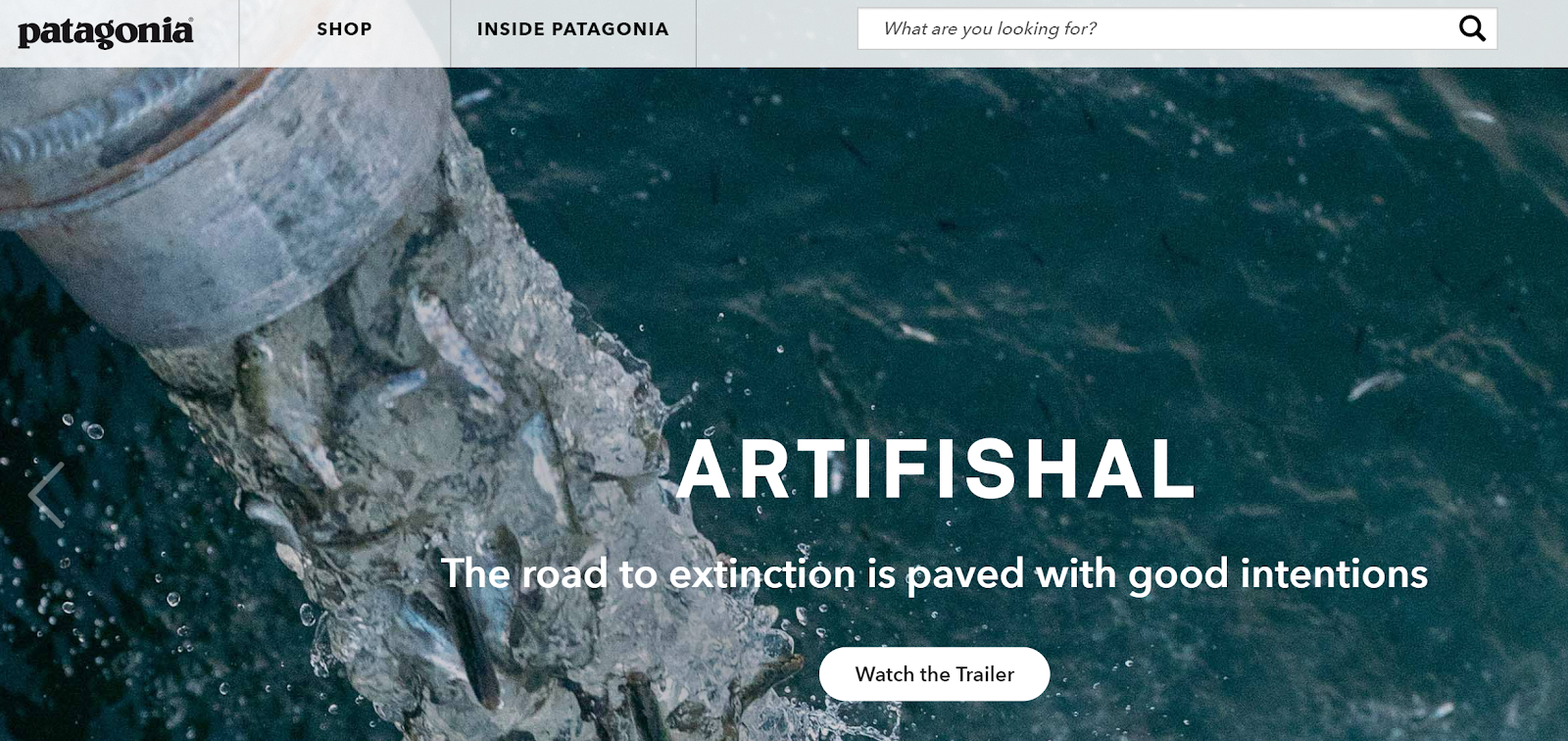
Their official mission statement is, “We are in business to save our home planet.” And, they regularly send out updates that promote environmental activism.
Like this Tweet here:

They create their products through the lens of sustainability and reduced environmental impact. This includes everything from climate change, to using ethically sourced materials.
For example, in 2019 they launched a campaign called “Misunderstood” that focused on educating people on practical uses of Hemp in manufacturing:
In the first 30 seconds of this video, you can hear rhetoric that supports all of their brand’s values.
Environmental issues form the cornerstone of why they do business. It is the change Patagonia want to create. And, it intersects perfectly with their audience’s worldview.
Example #2 – Shopify: Reshaping The World Of eCommerce
Shopify is an ecommerce platform aiming to make commerce more straightforward.
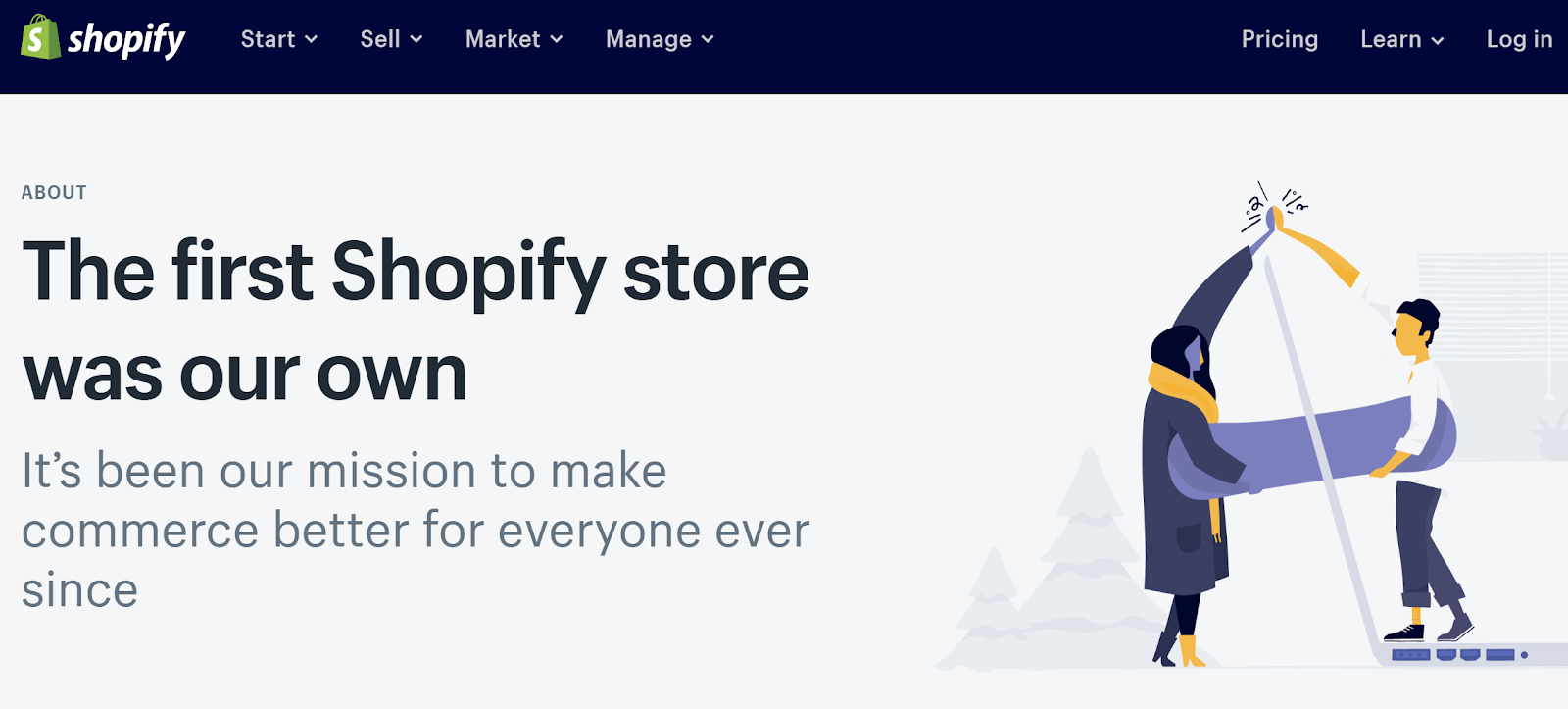
Their brand storytelling revolves around three values:
- Support
- Empowerment
- Change
They want to create a feeling of “we are all in this together” around their brand. And, show business owners that they will receive all the tools, mentorship and advice they need.
One of the ways they achieve this is by showcasing Shopify users’ stories.
At each of their marketing touchpoints, you can learn about successful brands who used Shopify to create change in their lives or industries:
By making people the “hero” of their brand story, they can show how people have successfully achieved the why that drives Shopify’s business.
Your brand’s why does not need to be a life-changing mission to save the planet, nor does it need to be a way to reinvent an entire industry.
But it does need to compelling, relatable and emotionally driven.
Once you understand your why you can use it drive the core decisions you make, the tools and techniques you use, and how you will make your story relatable.
It will also help you choose who the hero of your brand story is going to be.
Step #2: Choose Your Hero
Every good story needs a hero.
Heroes galvanize people and bring them closer to your brand. They give members of your target audience something (or someone) to root for and connect with.
So, the next step is to decide who or what is going to champion your brand.
There are three options to choose from:
Option 1: Your Product
You can put your product (or service) in the limelight and make it the hero for your target audience.
This type of hero works well with products that make a significant change to the customer’s daily life.
For example, Happy Socks use their product as a hero who saves people from boring outfits:
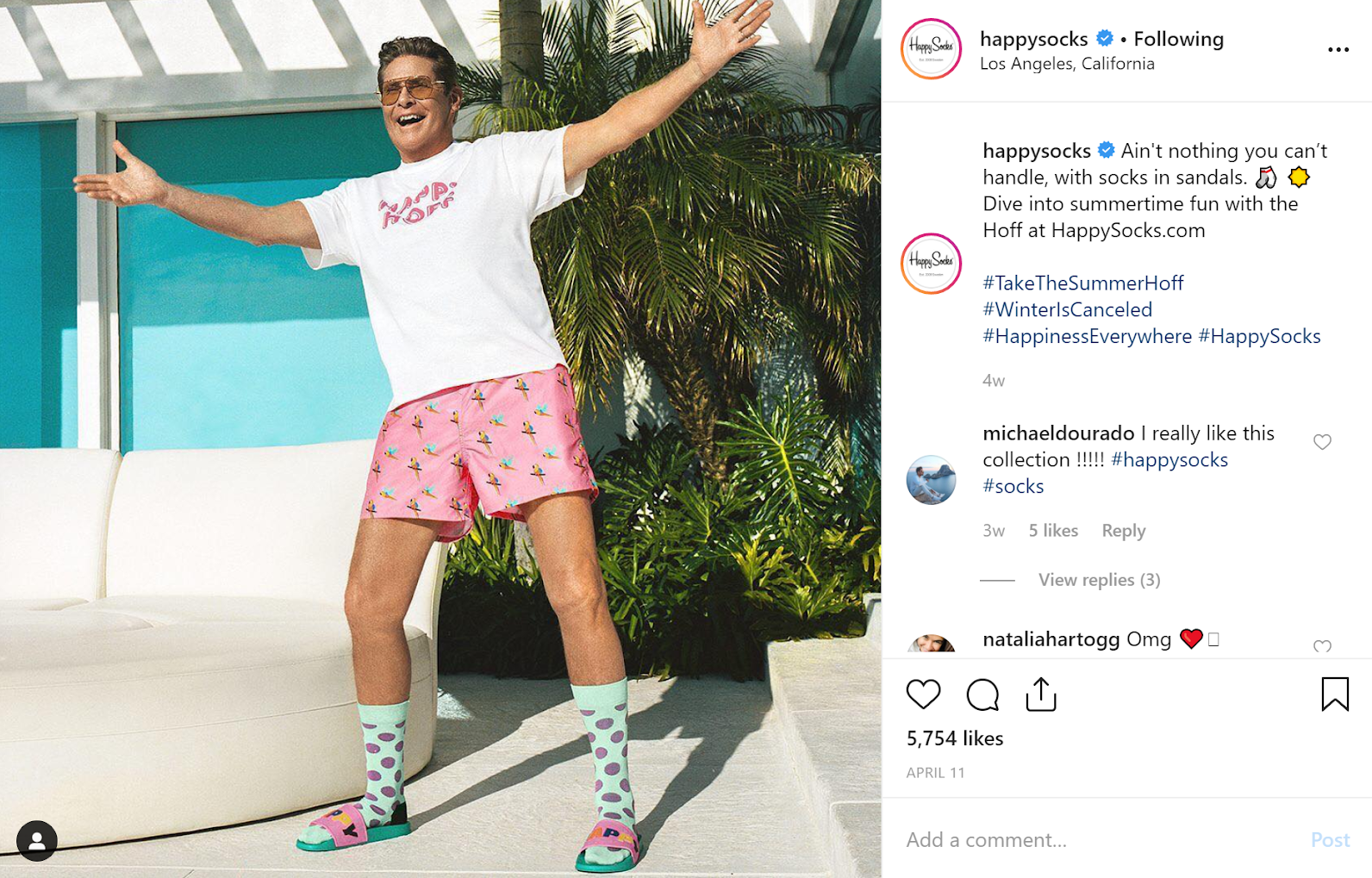
Paprcuts use their paper-based products as the hero against leather alternatives:
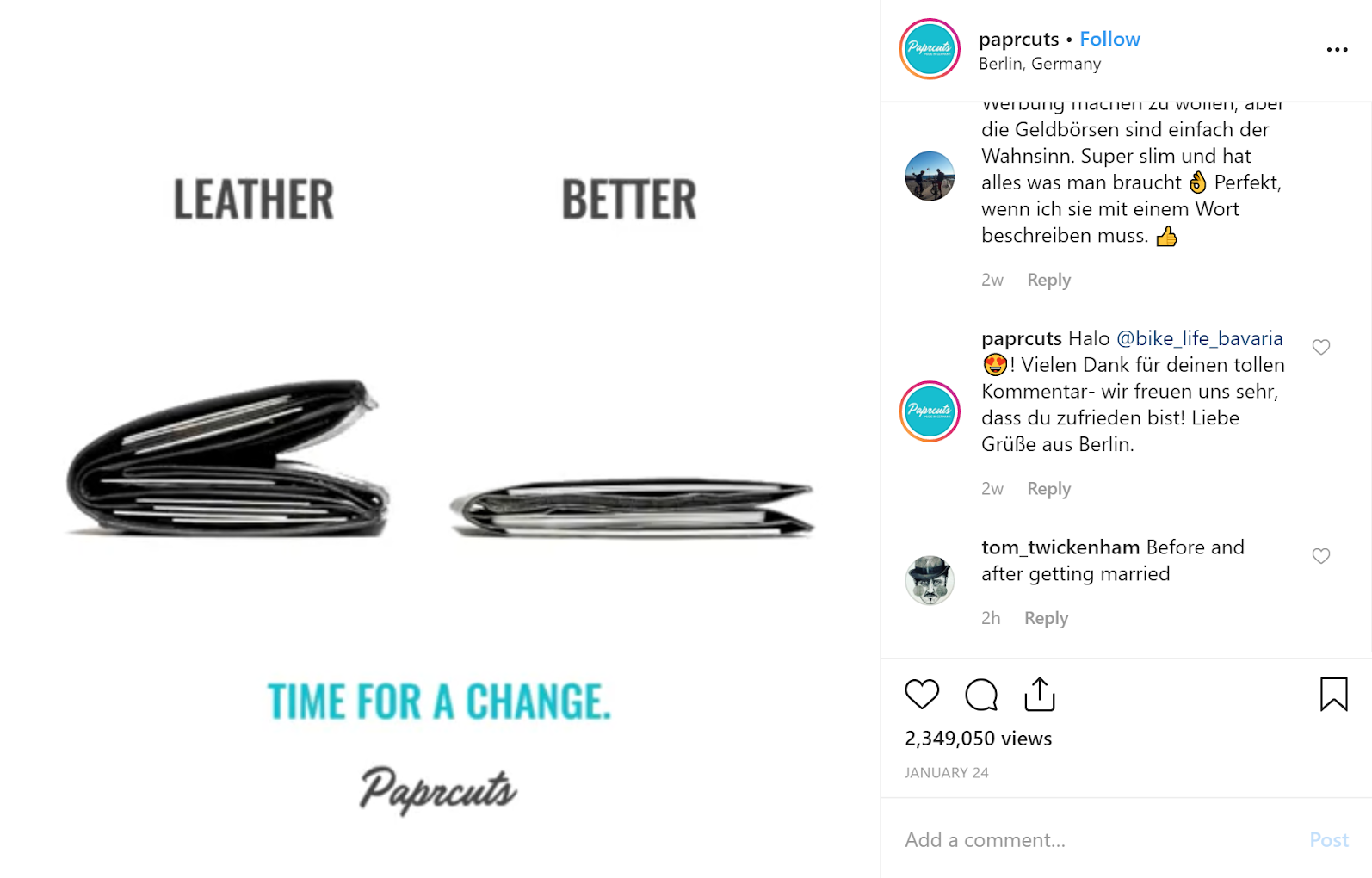
Lonely Planet uses their guidebooks as the hero to help people explore and find their way around faraway places:
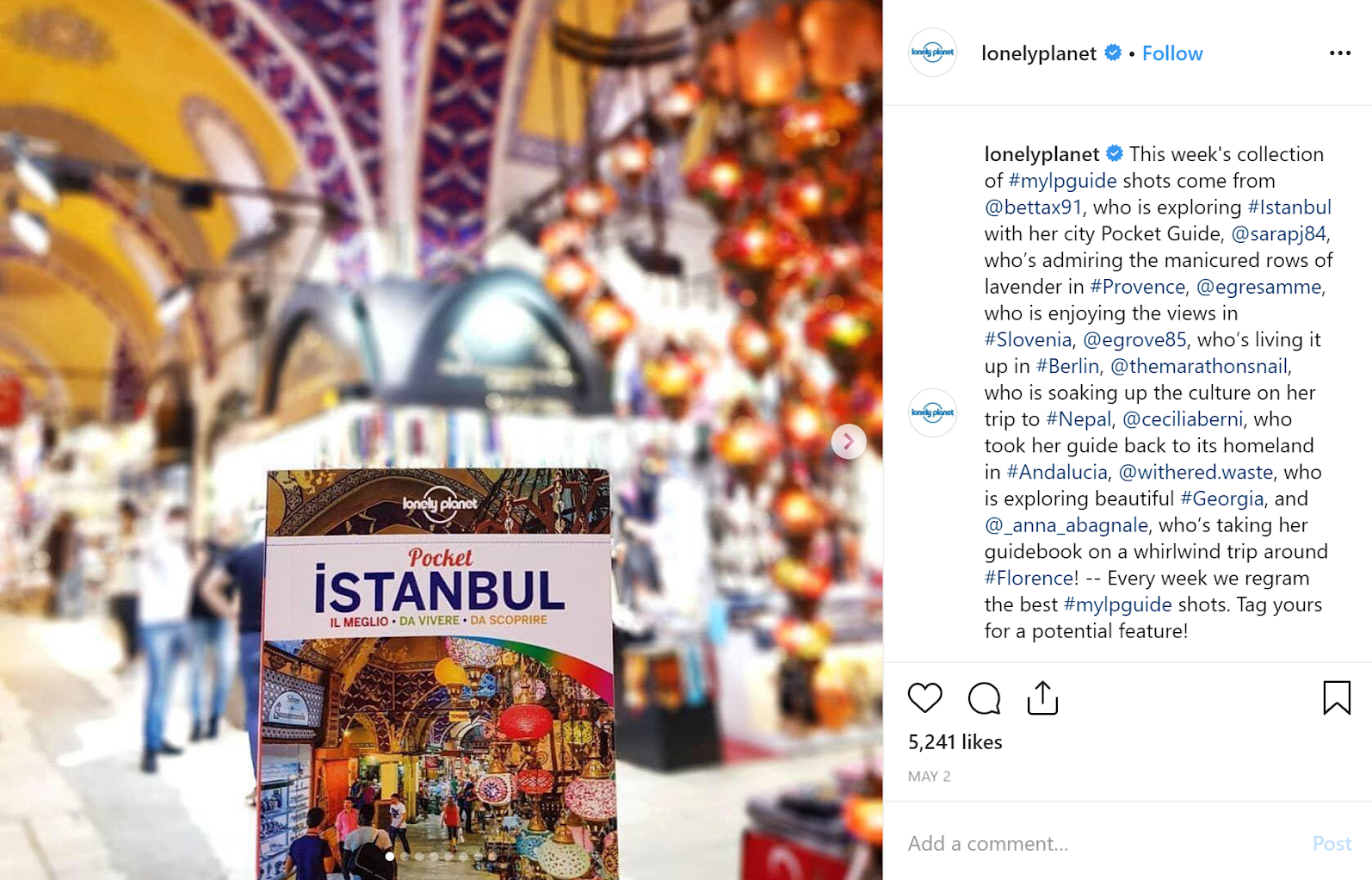
If your product helps people directly overcome a problem, it is worth looking at how you can transform it into a hero storyline.
Option 2: Your People
Your customers and employees can also be your brand heroes.
By putting them, their success stories and their good work in the limelight, you can create an emotional brand story your audience can picture themselves as a part of.
For example, Airbnb uses its customers and hosts as the heroes that make their service possible:
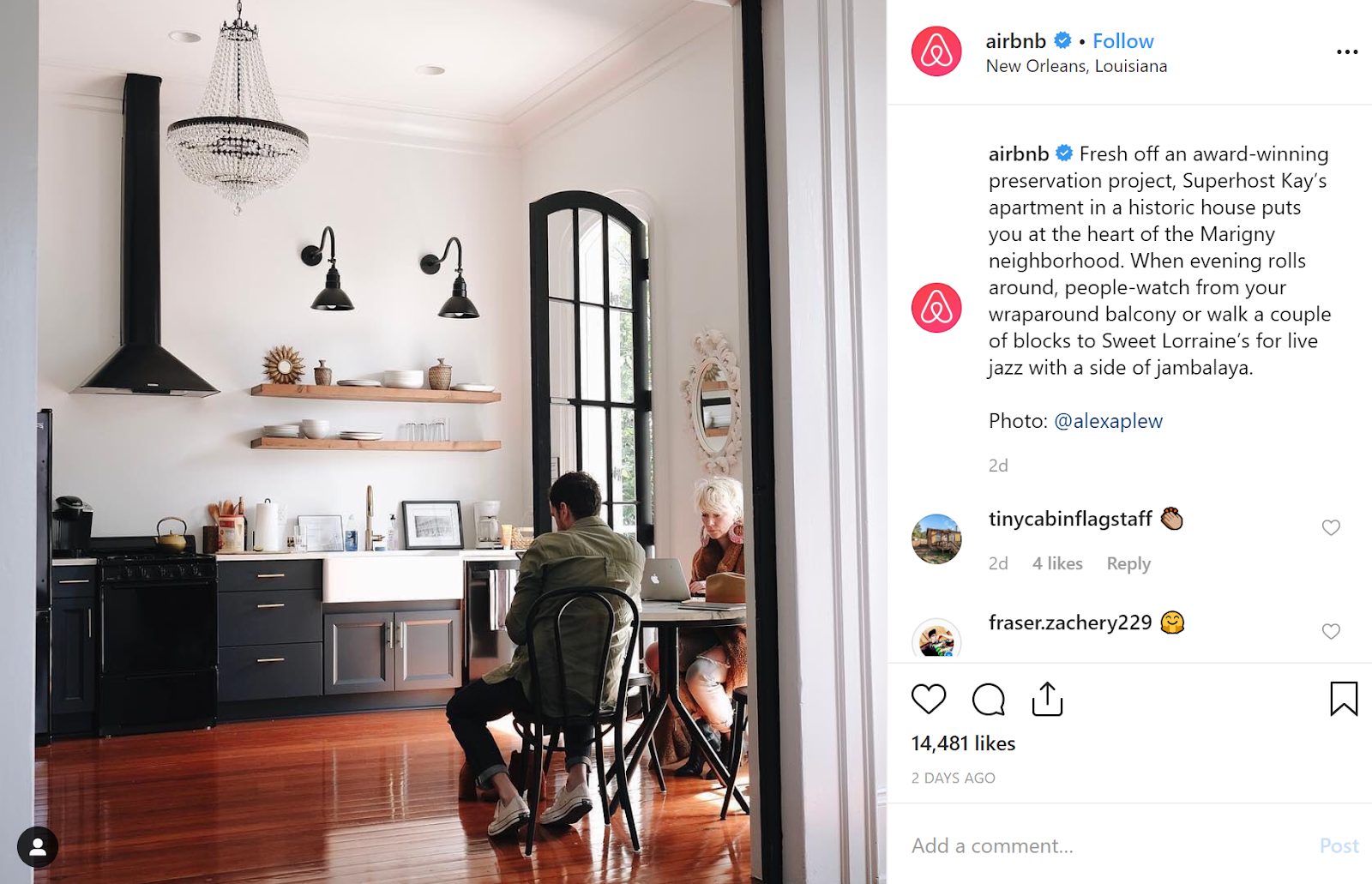
GoodLife Fitness uses its member’s success and their coaches skills to champion their brand message:
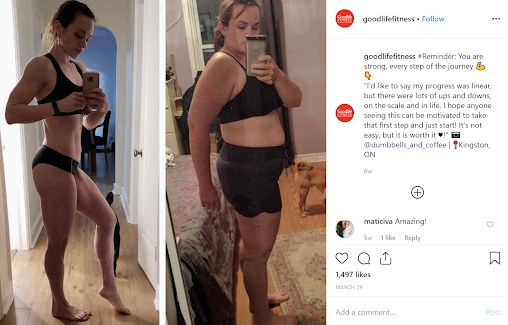
Love Trails Festival let the attendees to their event tell the story of what it is like to be a trailblazer:
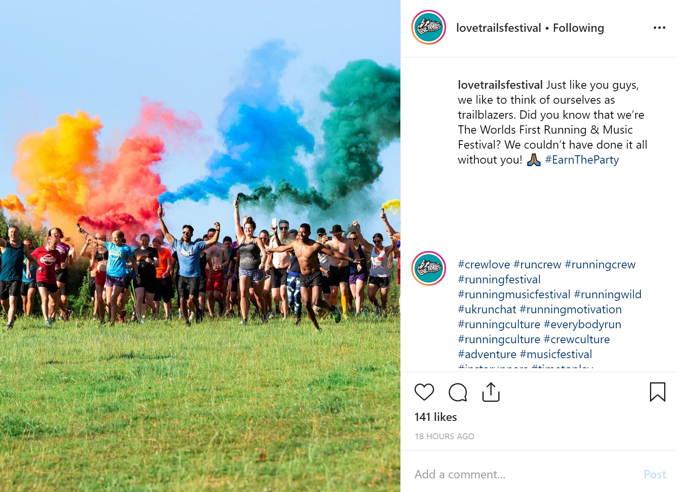
Much like with protagonists in movies and films, we like to look for elements of ourselves in the people we see and the brands we follow.
So, putting people first can make your brand stories much more relatable.
Option 3: Your Cause
The final option is to make your cause (or mission) the hero.
By documenting the work you are doing to help further a cause, and showcasing the stories surrounding it, you can raise awareness and cultivate an inspiring narrative.
For example, Charity: Water showcase the communities who benefit from their clean water campaign:

Burt’s Bees rarely showcase their products; instead they champion stories about reconnecting with nature:
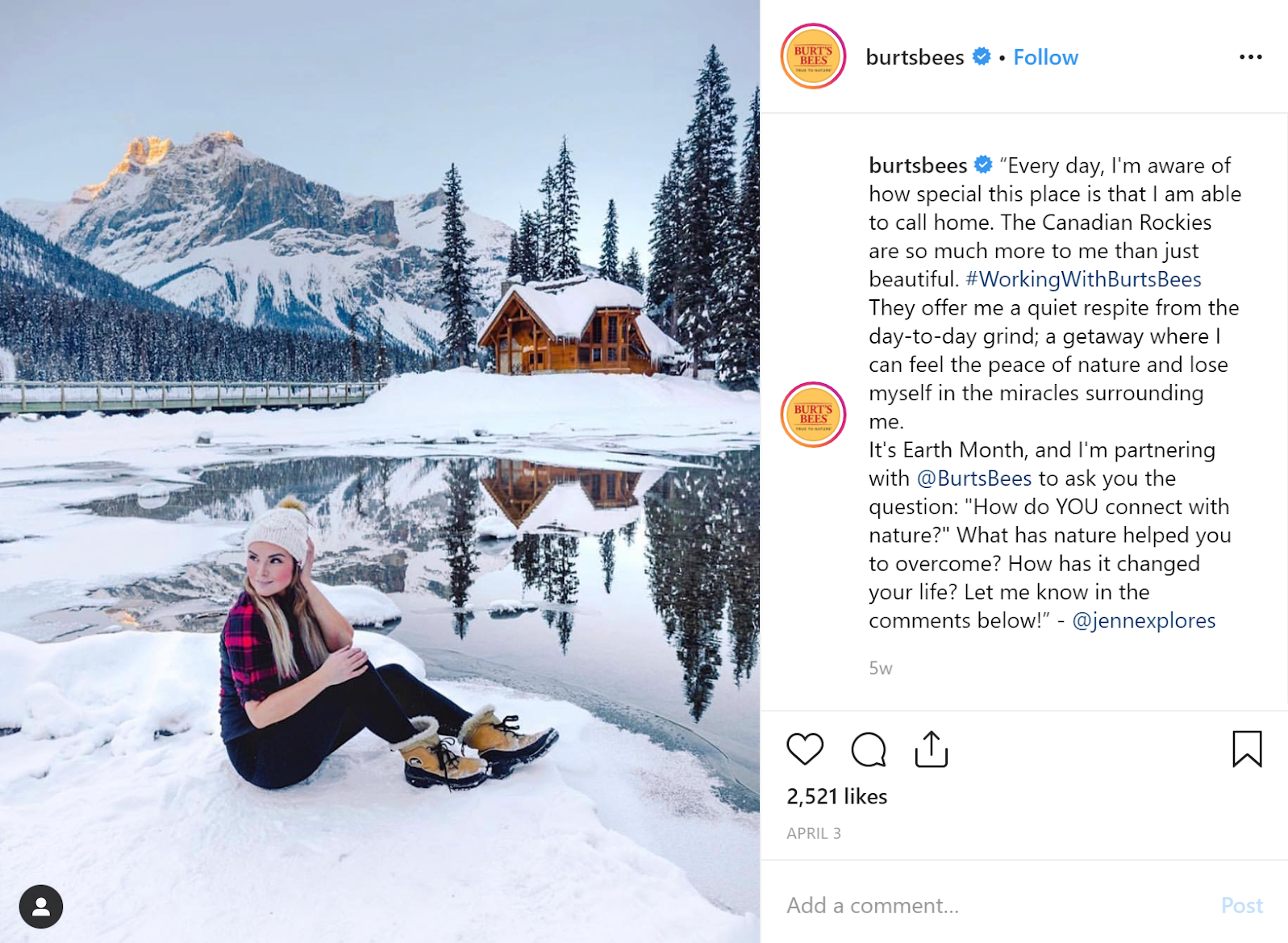
Headspace share daily updates to help people become more mindful, as part of their cause to make meditation easy and accessible:
Your cause — or the change you want to create — can help you create a story arc for your brand that uses lots of different mediums and techniques.
If you want your brand to be flexible and touch on lots of different elements of your brand story, this option may be for you.
There is no right or wrong answer here; only what is relevant to your brand’s why.
Step #3: Pick Your Words
The words you use to tell your story will either attract or repel your target audience.
So, you need to learn how to speak their language.
The words you choose to use in your brand storytelling should:
- Elicit emotions
- Share the message
You want to have associated with your brand.
This applies to all forms of communication you have at different touchpoints. From social media to customer service, and blog posts to your podcast ads.
For example, McDonald’s use simple, easy-to-understand language to show that their service is not complicated:
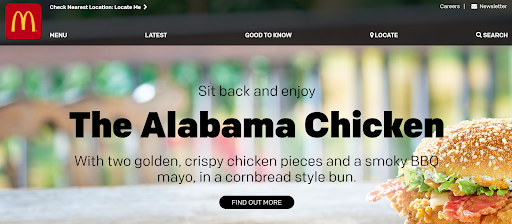
Take a look at this ad they ran in the UK for their range of coffees and the juxtaposition of language they use to make their point:
They are telling a story to an under served portion of the market who does not want to spend $12.95 on a small cappuccino.
The idea here is to find the words and phrases used by your target audience every day, and use them in your campaign.
You can find these by reading comments, listening to conversations and directly asking for feedback about the problems they face.
Harvard Business Review also has an excellent example list of the emotional triggers that customers respond to:
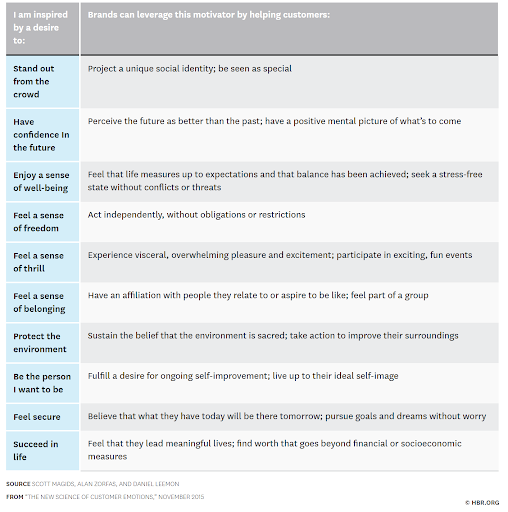
If in doubt, use words that would help to elicit the emotions that are most relevant to your brand.
Step #4: Be Consistent
The final step in this process is to deliver your story consistently to your audience.
To do this, you first need to outline what all of the touchpoints for your brand are. The most common ones tend to be:
- Marketing communications
- Advertisements
- Customer service
- Website pages
- Products
- Shop displays
You can then look at how the story needs to be told through that medium.
You can make this process easier by incorporating elements of cross-functional collaboration, where you pull together people from each department to create a strategy for this.
It can also be useful to have well-defined approval workflows to ensure all elements of corporate communication are approved for brand storytelling before they are published.
At Loomly we have created a brand success platform that makes consistent storytelling easy and allows you to seamlessly create workflows and work with multiple teams.
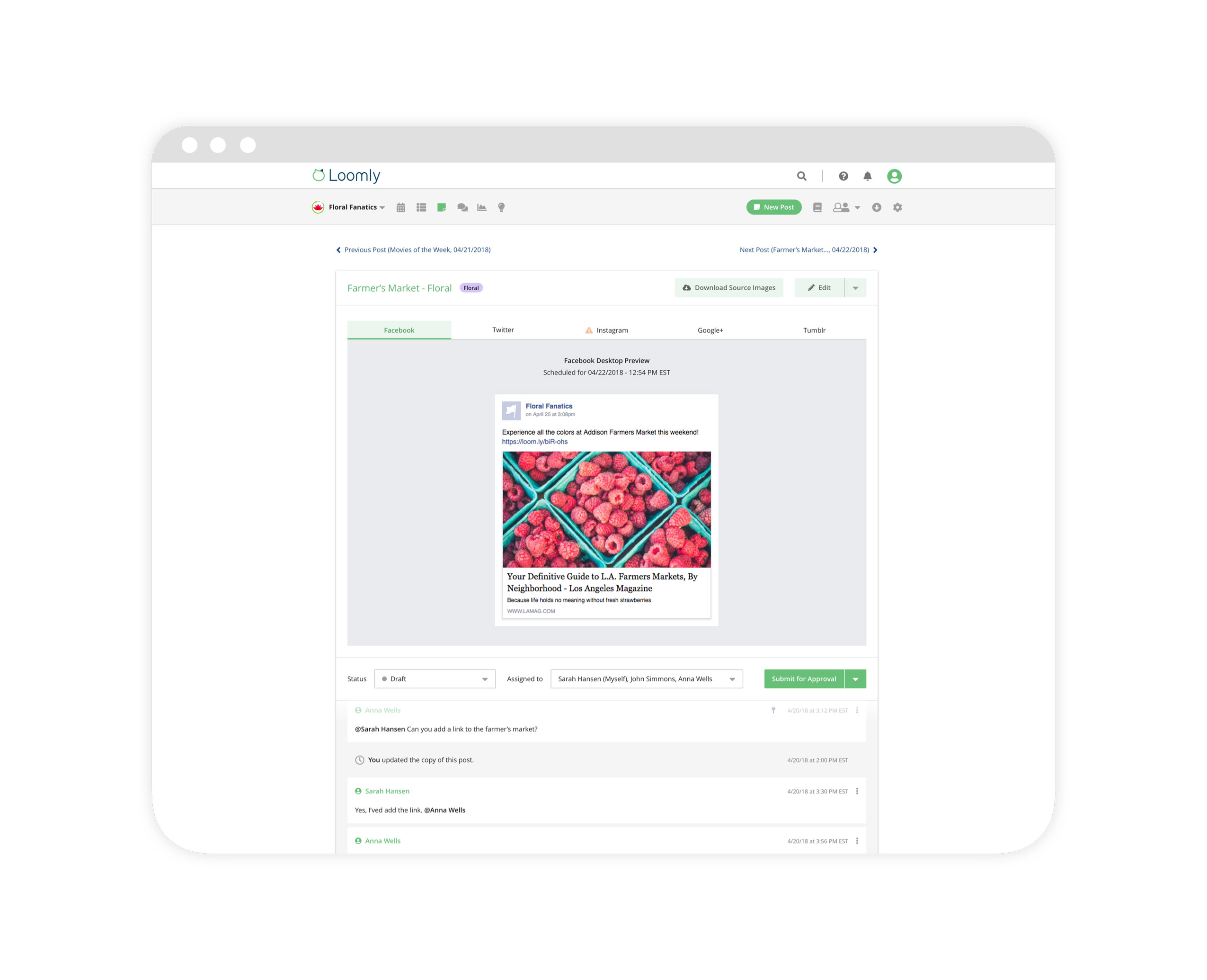
From social media calendars through to digital asset management and content approval, we have got you covered with all the features you need to simplify the brand storytelling process. (Some might say it is our mission!)
You can learn more about Loomly here.
That being said:
Brand consistency is a little beyond the scope of this article, so we have created an in-depth guide to help you!
Wrapping Up On Brand Storytelling
Brand storytelling is the process of cultivating a compelling narrative for your brand, that attracts the ideal target customer.
You can do this by:
- Uncovering your brand’s why.
- Choosing your story’s hero.
- Speaking your customer’s language.
- Being consistent across all channels.
This is by no means an easy process, but it is a worthwhile one.
If you successfully infuse storytelling into your brand, you will almost definitely see improvements in your overall brand’s success.
And, if brand success is important to you, you should take a look at what we are building here at Loomly (hint: the brand success platform you need). It’s free for the first 15 days: start your trial now.



